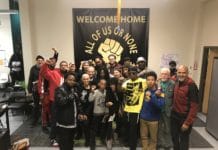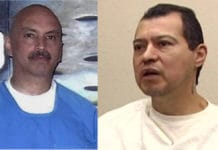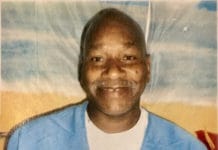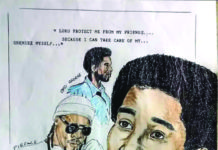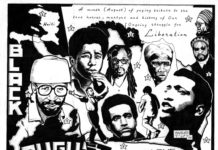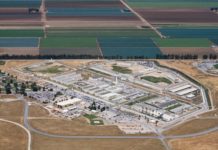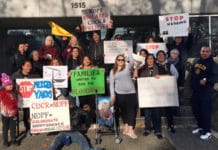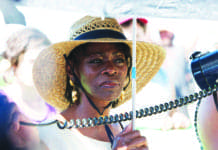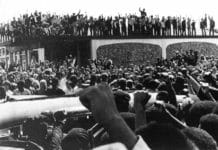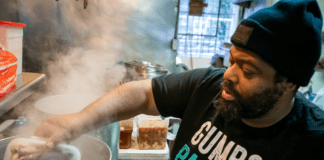Overview by Sitawa Nantambu Jamaa
California Department of Corrections and rehabilitation (CDCr) has systemic and dysfunctional problems that run rampant statewide within California’s prisons for both women and men which demand this California government to take immediate action and institute measures to effect genuine tangible changes throughout CDCr on all levels.
The entire state government was notified and made aware of this “dysfunctional” CDCr prison system in 2004 when its own governmental CIRP (Cooperative Institutional Research Program) blue ribbon commission, authorized by then Gov. Arnold Schwarzenegger, reported this finding and fact. (See http://www.immagic.com/eLibrary/ARCHIVES/GENERAL/CAGOV_US/C040600D.pdf; also see Prison Legal News article “California Corrections System Officially Declared Dysfuntional.”)

However, this CDCr state of “dysfunction” was not new to the massive number of women, men and youth being kept warehoused in CDCr, because they face it daily. (See California Prison Focus News prisoner reports, investigation and findings, 1990s to the present; San Francisco Bay View articles; ROCK and PHSS newsletters etc.)
During the historic California Prisoners’ Hunger Strikes, 2011-2013, tens of thousands of men and women prisoners in CDCr’s solitary confinement torture prisons, as well as a third of the general population prisoners united in solidarity in a peaceful protest to expose this dysfunctional system officially reported in 2004 by the CIRP.
The Prisoner Human Rights Movement (PHRM) Blue Print is essentially designed to deal with identifying and resolving primary contradictions by focusing on the various problems of CDCr’s dysfunction, including but not limited to the following areas:
- The systemic problems we face on 180 and 270 designed (Level 4) prisons and institutions deal with all matters of chain-of-command, assessing staff’s performance and the “culture” of CDCr staff;
- The prisoners’ Inmate Welfare Funds (IWF): Where are the monies being allocated and spent – that is, from canteen, recreation and entertainment, visiting, all available television channels, hobby craft etc.?
- The injustices, brutality and overall human rights violations facing women and men prisoners.
In order to deal with these injustices, we insist on:
- The right to document, expose and challenge abuses and violations;
- An end to violence and brutality at the hands of prison employees;
- An end to police brutality both inside and outside of prison; and
- The right to be safe from retaliation and from being coerced, threatened and blackmailed to betray fellow prisoners with false accusations.

We understand that all prisoner activists throughout CDCr have been harassed and threatened and have had acts of over-generalization of false intelligence directed at both women and men prisoners.
We must all hold strong to our mutual agreement from this point on and focus our time, attention and energy on causes that are mutually beneficial to all of us prisoners and our best interests. We can no longer allow CDCr to use us against each other for their benefit!
Because the reality is that we are an empowered, mighty force that can positively change this entire corrupt system into a system that actually benefits prisoners and thereby the public as a whole. And we simply cannot allow CDCr and CCPOA, the prison guards union, IGI (Institutional Gang Investigations), ISU (Investigative Service Unit), OCS (Office of Correctional Safety) and SSU (Service Security Unit) to continue to get away with their constant, progressive oppression and warehousing of tens of thousands of prisoners.
Send our brother some love and light: Sitawa Nantambu Jamaa, C-35671, SVSP C1-118, P.O. Box 1050, Soledad CA 93960. And learn more at www.prisonerhumanrightsmovement.org.
The Prisoner Human Rights Movement (PHRM) Blue Print is essentially designed to deal with identifying and resolving primary contradictions by focusing on the various problems of CDCr’s dysfunction.
Blue Print
The declaration on protection of all persons from being subjected to torture and other cruel, inhuman or degrading treatment or punishment was adopted by the United Nations General Assembly in its Resolution 3452 (XXX) of Dec. 9, 1975. The declaration contains 12 articles, the first of which defines the term “torture” as:
“Any act by which severe pain or suffering, whether physical or mental, is intentionally inflicted by or at the instigation of a public official on a person for such purposes as obtaining his or a third person’s information or confession, punishing him for an act he has committed or is suspected of having committed, or intimidating him or other persons.”
Prisoner Human Rights Movement
We are beacons of collective building, while clearly understanding that we, the beacons, must take a protracted internal and external retrospective analysis of our present-day prisons’ concrete conditions to forge our Prisoner Human Rights Movement (PHRM) onward into the next stage of development, thereby exposing California Department of Corruption and Repression (CDCr) and the United States prison system of cultural discrimination against our prisoner class.
This is why our lives must be embedded in our determined human rights laws, based on our constructive development of the continuous liberation struggle via our scientific methods and laws. Therefore, through our prisoner class, the concrete conditions in each prison shall be constructed through our Prisoner Human Rights Movement.
Background
The Prisoner Human Rights Movement’s (PHRM) principle negotiators (PNs) are Arturo Castellanos (C17275), Sitawa Nantambu Jamaa (Dewberry) (C35671), Todd Ashker (C58191) and George Franco (D46556), who have been the principle negotiators of our protracted struggle for all California prisoners’ rights within CDCr’s 33 prisons.

We have each been negotiating on behalf of all prisoners with the offices of CDCr Secretary J. Beard, Undersecretary S. Kernan, Director of Adult Institutions K. Harrington and Deputy Director R. Diaz, all officials of CDCr; California Attorney General’s Office; California federal judges; and California legislators from May 20, 2011 to the present.
The major changes within CDCr from 2011 to the present have been a result of prisoners’ willingness to acknowledge the PHRM and the PNs’ ability to navigate through the concrete conditions of our current environment, that is, prison. We serve the hard core interests of all prisoners, regardless of race or geographical location here in California.
The four of us serve all of California’s hundred thousand plus prisoners in all aspects of our common human rights and interests as we challenge all corrupt California prison employees violating and depriving us of our rights.
The Prisoner Human Rights Movement’s (PHRM) principle negotiators (PNs) are Arturo Castellanos (C17275), Sitawa Nantambu Jamaa (Dewberry) (C35671), Todd Ashker (C58191) and George Franco (D46556), who have been the principle negotiators of our protracted struggle for all California prisoners’ rights within CDCr’s 33 prisons.

We are responsible for listening to the complaints of prisoners on the state level and assisting all PHRM Local Councils to correct the local corrupt prison officials by seeing to it that all PHRM LCs do effective monitoring, investigating and correcting the denials of all prisoners’ rights; improving the constructive programs and conditions; stopping the government’s illegal acts of retaliation, corruption and anti-prisoner rights culture of all general population, Ad Seg, and women’s and men’s prisons on all fronts.
We work closely with the various lawyers who represent Ashker v. Brown class plaintiffs.
The Prisoner Human Rights Movement (PHRM) representatives are Gabriel Huerta, Louis Powell, Danny Troxell, Antonio Guillen, Paul Redd, Alfred Sandoval, Ronnie Yandell, J. Mario Perez, Y. Iyapo-I (Alexander), Fernando Bermudez, Frank Clement and Donald Lee Moran.
The Ashker v. Brown class plaintiffs represent all California women and men prisoners in CDCr to end long term solitary confinement in the state.
The Prisoners Human Rights Movement continues the struggle by taking our human rights issues to the United Nations (U.N.).
I. Monitoring reports on 33 state prisons
The PHRM Local Councils are those representatives at the 33 California prisons. They work together to deal with local prisoners’ contradictions, for we oppose any opposition to the Agreement to End Hostilities. Read it here in both English and Spanish.
The PHRM Local Councils seek to obtain and provide to the plaintiffs’ counsel (Anne Cappella, Esq., Pelican Bay Class Action Correspondence, Weil, Gotshal & Mangee, 201 Redwood Shores, CA 94065; Anne Butterfield Weills, Attorney, 499 14th St., Suite 300, Oakland, CA 94612; Carol Strickman, Attorney, 1540 Market St, Suite 490, San Francisco, CA 94103) the following information:
Prison Warden: __________________; Deputy Warden: ___________________;
Prison Associate Warden of GP: __________________;
Facility Captain: _________________;
Facility Lieutenants: _____________________; __________________;
Facility Sergeants: ____________________; ___________________;
Facility Correctional Counselor I: _________________;
Facility Correctional Counselors II: _____________________; _______________________.
The plaintiffs’ counsel will submit the Local Councils’ prison monitoring issues to the principle monitors for investigative review. The principle monitors will then submit their reports to plaintiffs’ counsel for submission to the government/court.
II. Monitoring implementation of the Ashker v. Brown settlement agreement

As stipulated under the terms of the settlement, the PHRM PNs, Castellanos, Jamaa (Dewberry), Ashker and Franco, will retain their hard-won seats at the table to regularly meet with executive CDCr prison officials to review the progress of the settlement agreement; to discuss general population (GP) programming; to review the development and structure of the step-down program during September 2015 through December 2016 for enhanced and improved programming; and to monitor prison conditions, inclusive of putting procedures in place to secure human rights.
For this stipulation to have meaningful authenticity in both the legally binding settlement and compliance, as well as its real, practical and effective impact on the concrete conditions throughout the California prison system, it is essential that some critical preliminary matters be discussed between the PHRM Local Councils and their respective cultural classes for men, women and GP populations and their Coalition Support Teams, who can then unify their collective solidarity Human Rights Braintrust via established hunger strike processing channels to:
- Establish the manner upon which the “progress” of the settlement will be monitored, assessed and reviewed with CDCr and determined to be acceptable as “progress” or non-progress utilizing the method of examining patterns and practices of five or more cases of the same independent violation.
- Establish the non-existence of programs at respective institutions and facilities, such as denial of full yard and dayroom, phone access etc. as well as prospective “programming,” identified as needed, and proposed to CDCr by Coalition-Legal Mediation Teams.
- Monitor and report on the functional implementation of investigating prison conditions and CDCr employees, holding their feet to the fire and letting CDCr employees know that they are not above the Ashker v. Brown Settlement Agreement. In addition, we shall gather all available information relevant to the terms of the settlement and for our federal due process and our human rights to be protected against all forms of substantial retaliation.
We will identify any CDCr, CCPOA, OCS, ISU and IGI actions not in compliance with the various terms of the settlement and which involve acts of harassment, discrimination etc. and foment, promote, manipulate and support CDCr, CCPOA and OCS’s long tradition of racial hostilities and violence.
III. Instituting the ‘Agreement to End Hostilities’
There are various components to our PHRM – principle negotiators, reps, plaintiffs and Local Councils – who are all prisoner activists fighting for our human rights, yet CDCr and its employees continue to wickedly dehumanize us all.
It has become abundantly clear, and should be known by the various General Population (G.P.) mainlines, that they should continue to be creative. As prisoner activists, we know a few creative resourceful efforts that can be initiated to lay a workable plan of action. Each prison has varying factors and contradictions that have an adverse effect upon us, and we will have to factor these matters into consideration as we put forth the following:
IV. ‘Legal’ PHRM prison activism education packets
Establish the connecting of our Five Core Demands, the Agreement to End Hostilities and the class action civil rights lawsuit – which affect solitary confinement (SHU and Ad Seg) and women and men GP mainlines – by first uniting like-minded women and men of all races around the Agreement to End Hostilities (AEH). At their respective law libraries, they can prepare a “Know Your Rights” educational packet.
For a model, write to Freedom Outreach/PHRM, Fruitvale Station, P.O. Box 7359, Oakland, CA 94601-3023 and ask for Appendix No. 9(A), “Learn to Protect Your Rights.” Share this awareness information with all California women and men prisoners throughout the system.
We seek supporters from the religious community, inside and outside prison, educating them to the agreement and unconstitutional human rights violations.
Also, educate the prisoners on their legal rights to oppose CDCr’s Security Threat Group (STG) scheme, including their rights to refrain from saying, doing and/or writing anything that they do not want to, such as CDCr’s “journals,” part of the Step-Down Program scheme, which violate their constitutional rights under the state and federal Constitutions’ free speech clauses.
V. Freedom Outreach
Freedom Outreach is the official clearinghouse for our Prisoner Human Rights Movement to provide our informational packets on California prison corruption. We shall educate each other daily, concerning our interests and rights to be treated like human beings throughout this prison system. We shall no longer tolerate being targeted and treated like animals.
We, the PHRM, clearly understand the importance of our family unity, family reconnection and rehabilitation of self.
We encourage all people to request a copy of the booklet “Prisoner Human Rights Movement Blue Print” from the Freedom Outreach address below and ask that you cover the cost for the mailing by sending $11.50 either in funds or the equivalent in postage stamps to: Freedom Outreach/PHRM, Fruitvale Station, P.O. Box 7359, Oakland, CA 94601-3023.
Three questions for prisoners recently released from solitary confinement
The Prisoner Human Rights Movement, PHRM, poses the three questions that follow below to CDCr prisoners, so that we can share with the world the facts about the harsh treatment and sensory deprivations we personally experienced over five, 15 or even 30-plus years.
We seek your factual stories of life within CDCr’s control units and general population. We accept donated articles and artworks for Freedom Outreach’s book project and fundraising purposes.
We do not need any articles to exceed six single-sided typed pages per article. Anything longer will be rejected. All donated materials become the property of Freedom Outreach forthwith.
Here are the questions:
- What did you do to survive the horrible and dehumanizing mental and emotional torture over “X” years?
- What is your reaction to the first 30 days of your being released out of solitary confinement?
- Upon your release to the general population, were you afforded all of your due process, equal protection and procedural due process rights? Please explain whether you received them or not.
Resources
The following publications are recommended reading:
- San Francisco Bay View newspaper, 4917 Third St., San Francisco, CA 94124
- The Abolitionist c/o Critical Resistance, 1904 Franklin St., Suite 504, Oakland, CA 94612
- CA Prison Focus, 1904 Franklin St., Suite 507, Oakland, CA 94612
- PHSS News, 1904 Franklin St., Suite 507, Oakland, CA 94612
- The Fire Inside Newsletter, 1540 Market St., Room 490, San Francisco, CA 94102
The following books are recommended reading:
- “The Golden Gulag” by Ruth Wilson-Gilmore
- “Building a Movement to End the New Jim Crow” by Daniel Hunter
- “The New Jim Crow” by Michelle Alexander
Conclusion
In July 2015, President Barack Obama became the first U.S. President to denounce the use of solitary confinement. Locking people up alone for years or decades, Obama said, “is not going to make us safer. That’s not going to make us stronger. And if these individuals are ultimately released, how are they ever going to adapt?” (See New York Times article “Solitary Confinement Is Cruel and Too Common” by the Editorial Board, Sept. 2, 2015).
In our statement issued on Sept. 1, 2015, marking the class action settlement legal victory, plaintiffs collectively stated:
“This settlement represents a monumental victory for prisoners and an important step toward our goal of ending solitary confinement in California and across the country. California’s agreement to abandon indeterminate SHU confinement based on gang affiliation demonstrates the power of unity and collective action. This victory was achieved by the efforts of people in prison, their families and loved ones, lawyers and outside supporters.
“Our movement rests on a foundation of unity: our Agreement to End Hostilities. It is our hope that this groundbreaking agreement to end the violence between the various ethnic groups in California prisons will inspire not only state prisoners, but also our communities on the street, to oppose ethnic and racial violence.
“From this foundation, the Prisoners’ Human Rights Movement is awakening the conscience of the nation to recognize that we are fellow human beings. As the recent statements of President Obama (above) and of U.S. Supreme Court Justice Kennedy illustrate, the nation is turning against solitary confinement.
“We celebrate this victory while, at the same time, we recognize that achieving our goal of fundamentally transforming the criminal justice system and stopping the practice of warehousing people in prison will be a protracted struggle. We are fully committed to that effort, and invite you to join us.” – Todd Ashker, Sitawa Nantambu Jamaa, Luis Esquivel, George Franco, Richard Johnson, Paul Redd, Gabriel Reyes, George Ruiz, Danny Troxell
To learn more, visit Prisoner Human Rights Movement at Prisonerhumanrightsmovement.org.

 Store
Store



